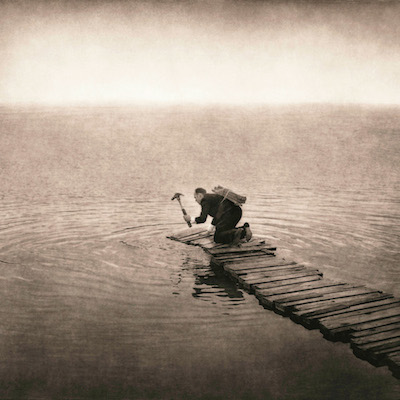
Released on February 10, 2014
HWY-037
CD, Digital
Purchase Album
Featured Collaborators
Songs
- Song 44
- Allistrum's March
- The Necklace of Wrens
- The Girl Who Broke My Heart
- Freedom / Saoirse
- The Sailor's Bonnet
- The Old Bush
- Opening Set
- Hunting the Squirrel
- Samradh Samradh
Notes
Album of the year 2014 honors from:
- NPR Music
- Deezer
- Mojo
- Ticket Awards (The Irish Times readers poll)
- The Guardian's Michael Hann & Robin Denselow
- The Irish Times
- Nialler9
- Mashable
The Gloaming's debut album, entitled simply The Gloaming, was produced by Thomas Bartlett and mixed by Patrick Dillett (David Byrne & St. Vincent). It was finished in the summer of 2013 during the build up to a series of sold out concerts at prestigious venues in London, Amsterdam, Paris & New York.
In early 2011, the five musicians first met to explore their collaboration at Grouse Lodge Studios in Ireland's County Westmeath, an hour northwest of Dublin. In August 2011 -- newly christened The Gloaming -- they went on their first Irish tour, including a sold out debut show at The National Concert Hall, Dublin. The sellout hints at the excitement surrounding their formation, as does the fact that Ireland's prime minister Edna Kenny was in attendance that night.
Most of The Gloaming's work is based on traditional Irish forms, the basic grammar of which is known as a "reel." "Reels" are performed in simple rhythmic meters (2/2 or 4/4) and repeated in simple configurations. They are the syntax of Irish music just as a "riddim" is to dub reggae and the "break" is to contemporary hip-hop.
Happily, what The Gloaming do with the syntax of Irish music is anything but simple nostalgia. Into these traditional structures, they introduce deep wells of personality and experience. Lyrics are drawn from the history of Irish literature, old and new. The music is played with the authority of virtuosos. The result is unclouded by sheen or hokey sentimentality. Instead, it's haunting and emotionally charged. It sounds ancient without being a mere reproduction.
#1. Song 44: Adapted from an 800-year-old Irish poem about a man who sees the woman he loves in his dreams. It begins spare and spooky with spectral, beautiful Gaelic singing. A fiddle is introduced which soon draws itself over the song until it climaxes with soaring strings.
#2. Allistrum's March: An instrumental based around an old Irish march, it is built around a series of lyrical, tightly structured fiddle lines.
#3. Freedom: This song is equal parts Iarla & Thomas, built around the inchworm, earworm-like piano melody which was originally heard in a brief interlude on Doveman's first record for Brassland. The lyrics are adapted from Irish poet Se?n ? Riord?in?s "Saoirse," and speak to the struggle between individuality and serving a tribal code, between creative freedom and containment.
#4 Old Bush: This song offers a break in the action -- as guitar and hardanger fiddle spend more time scraping along than they do building momentum, until the last two minutes when they begin to breath in unison, showing how the familiar rhythmic jig of Irish traditional song comes into being.
#5 Hunting the Squirrel: A stripped down instrumental meant to evoke the sound of quiet music played in the intimate confines of a small room
#6. Necklace of Wrens: A vocal number with words by Limerick poet Michael Hartnett
#7. The Girl Who Broke My Heart: A short fiddle and hardanger instrumental which borrows equally from reels and notions of contemporary classical music.
#8. Sailor's Bonnet: The most famous reel on the album it was first recorded in the 1920s, and has been covered by dozens of artists. This version is marked by a spare piano line and the regal pacing and improvisational touches of the fiddle.
#9. Opening Set: This 16-minute instrumental is the center piece of the album. Each musician in the ensemble takes their turn to shine. The longing voice of Iarla is answered by the hardanger and paced by minimalist piano lines, then the guitar and fiddle work the song into a storm. Brooding, sweet and slow then rhythmic and cathartic, it's an epic built up layer by layer -- like the canvas of an old master painting.
#10: Samradh Samradh: First documented around Dublin in the 1730s, this is a song written for the Gaelic festival known as Bealtaine (and Bealtane and in several other English spellings). The holiday marks the beginning of summer, and is celebrated April 30 to May 1 -- sunset to sunset -- with the lighting of bonfires and the decoration with flowers. An appropriate way to mark the blooming of a new musical force.
